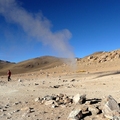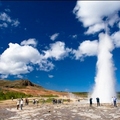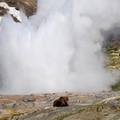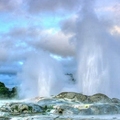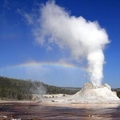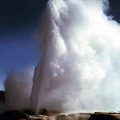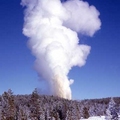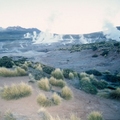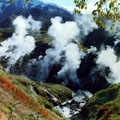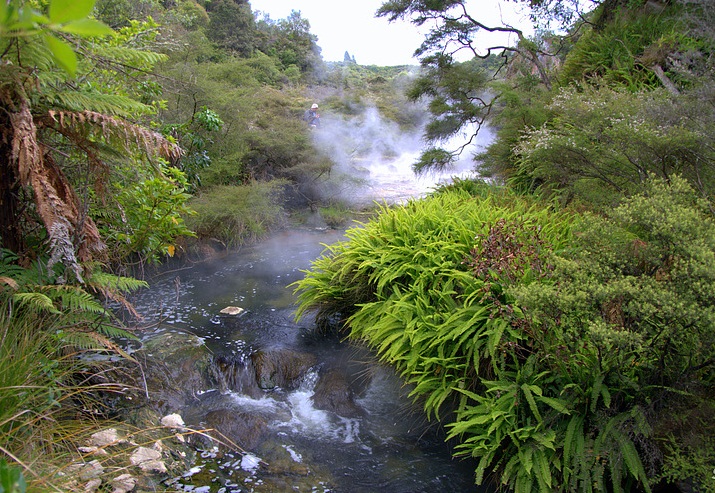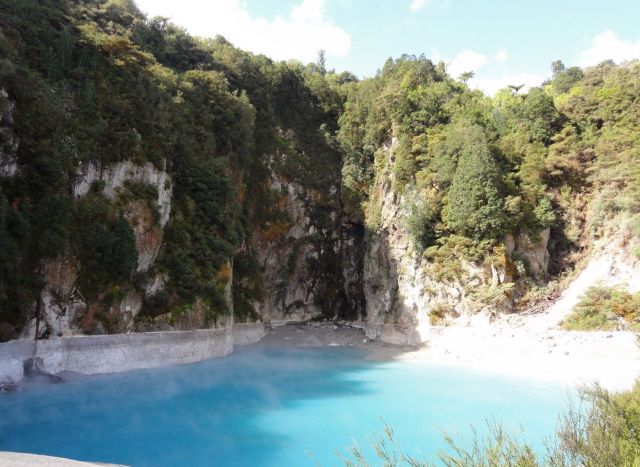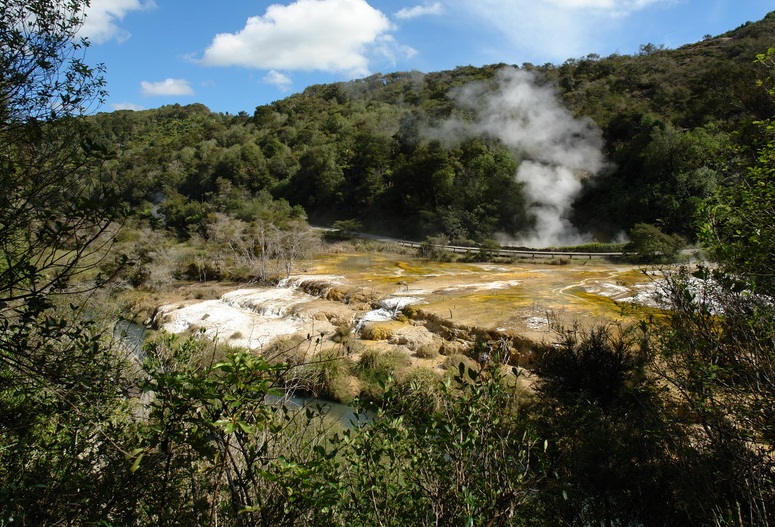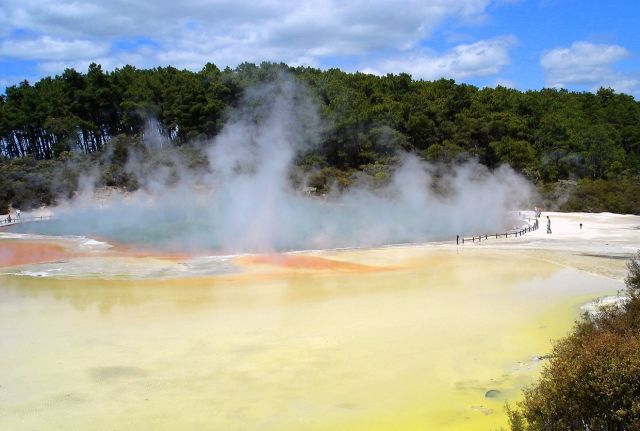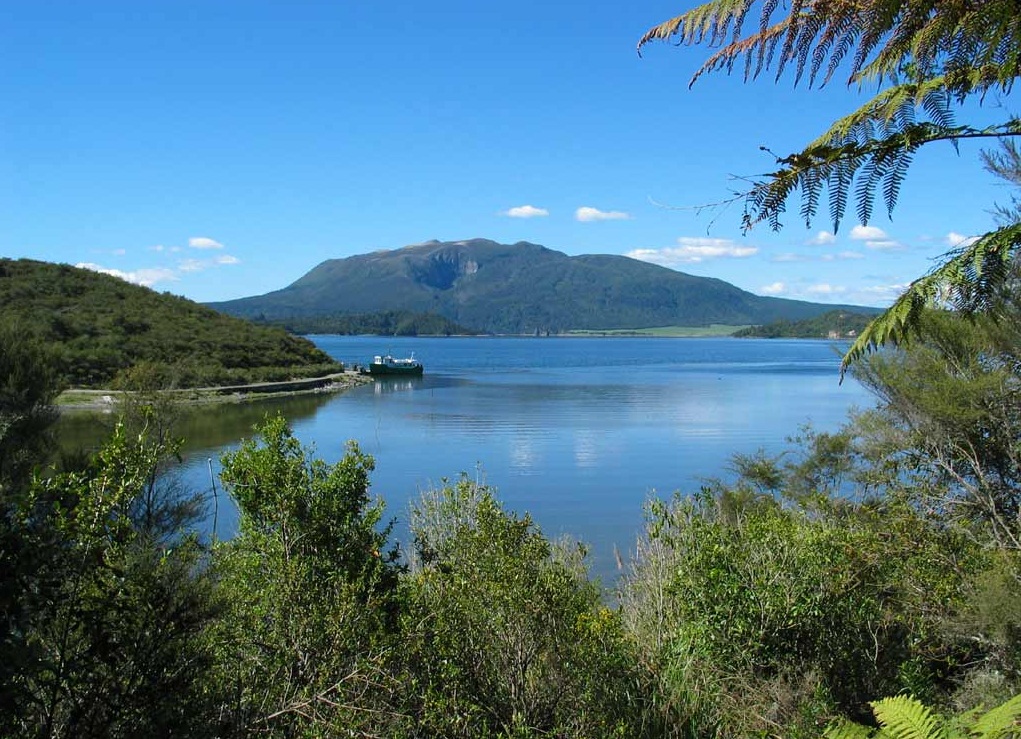World Tourism / The Most Impressive Geysers on the Earth / The Waimangu Geyser, New Zealand
The Waimangu Geyser, New Zealand
The Waimangu Valley
The Waimangu Valley is a bleak desert of craters and boiling pools. It goes beyond the Tarawera and the Rotomahana lakes , once guarded by the famous Pink and White Terraces, a formation of silica-like layers of a giant tiered wedding cake. The Waimangu geyser is situated on the territory of New Zealand, North Island. In the XIX century in the area, not far from Rotorua, was a volcano. The famous Pink and the White Terraces occupied an area of over 5 hectares. The most beautiful terraces were white. They looked like a huge staircase, dazzling in the sunlight. The Terraces were destroyed by June 10, 1886 because of the eruption in Tarawera mountains. Nothing foretold this eruption and the burning lava buried not only the terrace, but the residents of several nearby villages and left a layer of ashes killing 155 people. Traces of catastrophe are obvious today. A number of craters, as traces of a giant in fresh snow, stretch Mount Tarawera at a distance of 20 km , and vapor continue to evolve on the cliffs around the Rotomahana Lake. The Wairoa village was unearthed and attracts many tourists today , like a mini-pump.
The Waimangu Geyser
Over the years the hot springs continued to seethe in this region, and in 1990 the world's largest geyser formed there. The local residents - Maori - call it Waimangu that in their language means "black water", because of the erupting jets of water and steam mingled with a lot of dirt.
The Geyser’s activity
Waimangu lasted four years. During this time it spurt the boiling water every 30-36 hours at a height of 300-400 m. The highest elevation of the jet was of 460 m. Each eruption in the air rushed around 800 tons of water. The water jet seized stones and raised them to a height of 450 m. The strongest emission of hot water occurred in August 1903. The jet was so high that it poured watching a geyser. Four people were severely burned and died. In late 1904 the geyser suddenly ceased to emit a jet of water. Scientists believe that this was due to the lower water levels in the nearby Tarawera Lake to 11 m. Its activity was resumed only once, on April 1, 1917. Currently, the largest geyser basin is a lake. It is quite picturesque and attracts tourists. Its waters, due to iron oxides, have a reddish color, and sulfur deposits give it a yellow tinge. Each eruption was a very spectacular sight that attracted the attention of many people around the world and the geyser became quite a popular tourist destination.
Waimangu is the Geyser which had the highest eruption of water vapor: 460 m. Located in the Upper Waikato River region, the geyser was active during the 1899-1904. A land of fire and devastating volcanic eruptions has a unique, strange beauty . Enjoy the beauty of Polynesia and visit this modern tourist destination with lakes bordered by mountains and breathtaking views of geysers.
Others from The Most Impressive Geysers on the Earth
Geysers are one of the manifestations of later stages of volcanism , and common areas of modern volcanic activity provided by hydrogeological conditions.
Being an intermittent hot water spring and vapor, volcanic, throwing water at regular intervals, to the sea lifting time form of a column, a geyser occurs if the activity of a volcano is at a late stage.
Large assets of geysers in the world are few , but they are of a rare beauty and fascination.
They are a pride and remarkable natural phenomena for the states where they are situated .
No matter what shape, cone-like or like fountains, geysers are rare as they need an almost perfect balance of heat and water conditions and the right rock and channeling.
Best spots of geysers in the world There are few best spots of geysers in the world.
There are only about a thousand geysers in the world situated on some major geothermal areas with geysers force on the Earth: Yellowstone Plateau in the U.
S.
A.
(where it is concentrated about half of all existing geysers), Iceland, New Zeeland( 58 geysers), Kamchatka, Chile, Papua New Guinea ( 38 active geysers), Indonesia( Sumatra Island – 17 geysers), Eastern Africa ( 6 geysers), China ( 10 geysers), Japan ( 4 geysers), Ethiopia and Kenya( very few).
Europeans first learned about the Icelandic geysers in the thirteenth century.
Yellowstone geysers were far from the civilized world until of the first decade of the nineteenth century.
John Colter ‘s stories were perceived as nonsense for too long time.
It took more than fifty years, unless specific expedition with the participation of artists and photographers convinced people of the existence of the world's largest geyser fields in the super-giant caldera of the dormant.
In 1872, Yellowstone geysers were under the protection of the world's first national park.
In 1850, a missionary from R.
Taylor became aware of the geysers in New Zealand.
It was only in 1941 that is only recently in historical terms, has been committed by one of the last great geographical discoveries on the planet.
Thegeologist T.
Ustinova and the conductor Alexander Krupenin, apparently, were the first humans to set foot on the shore of the river called Geyser.
What threatens the geysers? How long do they live? In some parts of the world geothermal geysers are simply former constructions.
In the 19th century , New Zealand North Island had five major geyser fields, which erupted about 220 geysers, now it has only 58 geysers, some of them quite small.
The reasons for the disappearance of New Zealand's geysers are different : natural disasters (volcanic eruption of Tarawera, changes on the groundwater levels), the drilling for the construction of thermal power plants, flooding during the construction of hydroelectric power.
The most powerful geyser on the Earth , Waimangu existed in New Zealand from 1899 to 1904.
With each eruption, it threw about 800 tons of water and trapped many jet stones raised by half a kilometer high.
There are even cases of death, found themselves too close to the erupting from the giant.
But Waimangu stopped working due to the lower water levels in the nearby lake.
Geysers are valuable destinations in the world.
A fascinating circuit where you can live unforgettable moments is visiting spectacular attractions such as the mysterious geysers.
They offer fascinating landscapes where majestic volcanoes and impressive lava formations are found together.
If you are a geyser fan, we offer a selection of the most beautiful and largest geysers in the world.

